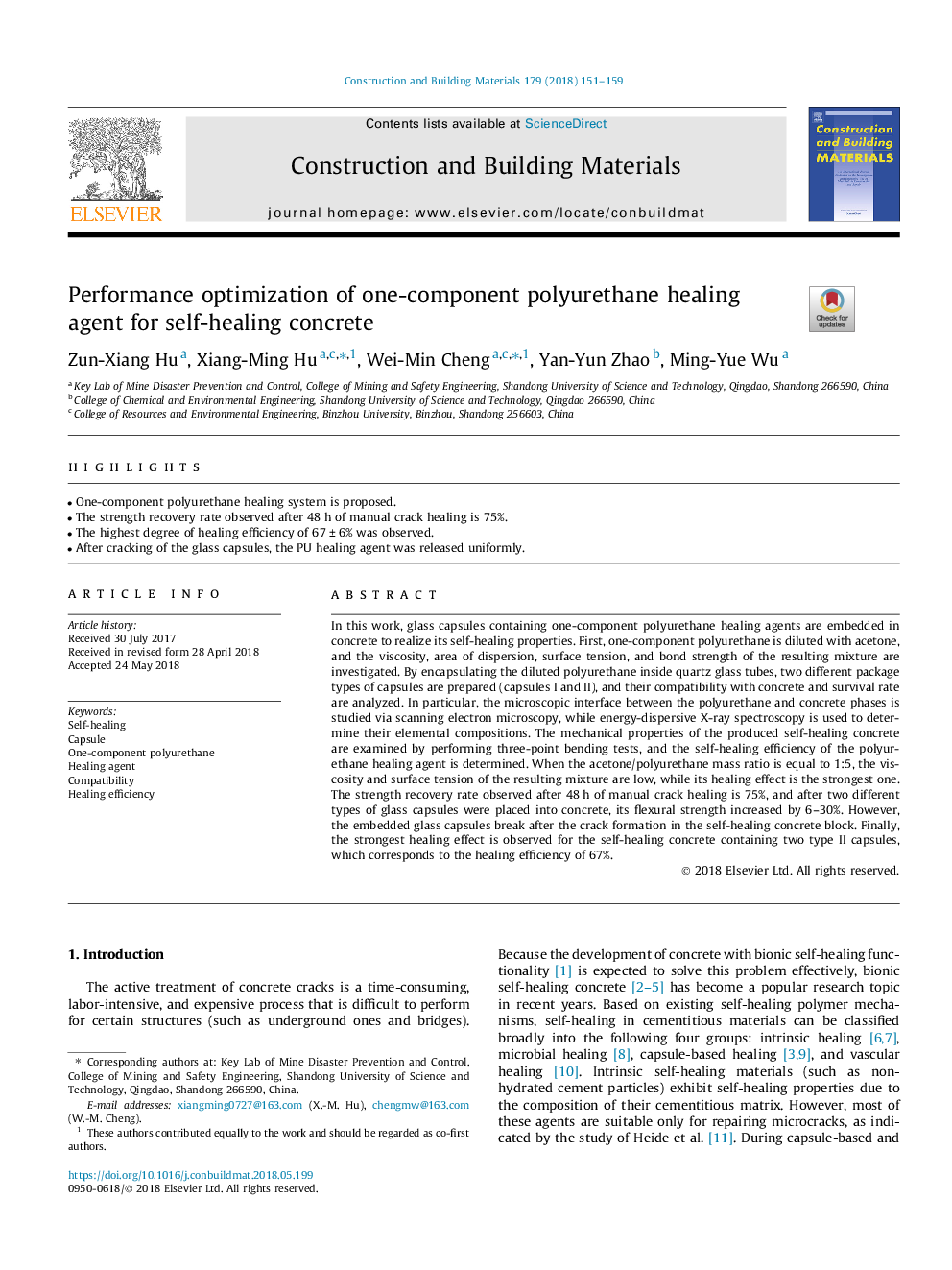| Article ID | Journal | Published Year | Pages | File Type |
|---|---|---|---|---|
| 6712613 | Construction and Building Materials | 2018 | 9 Pages |
Abstract
In this work, glass capsules containing one-component polyurethane healing agents are embedded in concrete to realize its self-healing properties. First, one-component polyurethane is diluted with acetone, and the viscosity, area of dispersion, surface tension, and bond strength of the resulting mixture are investigated. By encapsulating the diluted polyurethane inside quartz glass tubes, two different package types of capsules are prepared (capsules I and II), and their compatibility with concrete and survival rate are analyzed. In particular, the microscopic interface between the polyurethane and concrete phases is studied via scanning electron microscopy, while energy-dispersive X-ray spectroscopy is used to determine their elemental compositions. The mechanical properties of the produced self-healing concrete are examined by performing three-point bending tests, and the self-healing efficiency of the polyurethane healing agent is determined. When the acetone/polyurethane mass ratio is equal to 1:5, the viscosity and surface tension of the resulting mixture are low, while its healing effect is the strongest one. The strength recovery rate observed after 48â¯h of manual crack healing is 75%, and after two different types of glass capsules were placed into concrete, its flexural strength increased by 6-30%. However, the embedded glass capsules break after the crack formation in the self-healing concrete block. Finally, the strongest healing effect is observed for the self-healing concrete containing two type II capsules, which corresponds to the healing efficiency of 67%.
Related Topics
Physical Sciences and Engineering
Engineering
Civil and Structural Engineering
Authors
Zun-Xiang Hu, Xiang-Ming Hu, Wei-Min Cheng, Yan-Yun Zhao, Ming-Yue Wu,
